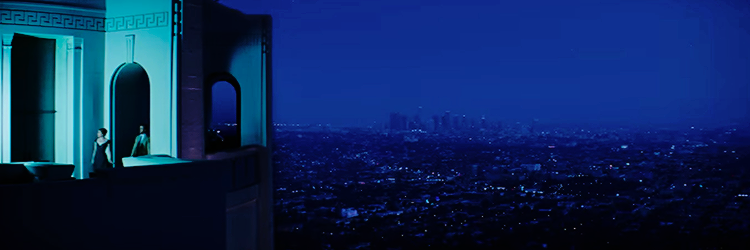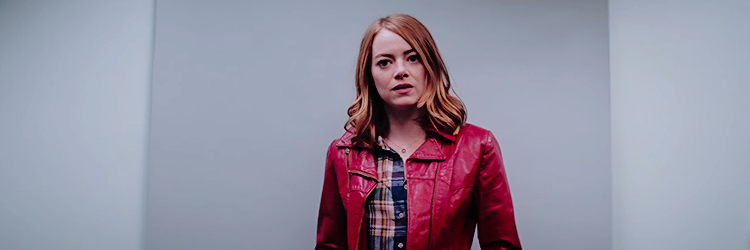“Color is a power which directly influences the soul.” – Wassily Kandinsky
The success of La La Land – whether that be credited to its musicality, to the relatable motif of seemingly-unreachable dreams, to its honest portrayal of love with all its flaws – it is undeniable that it managed to affect its audience on an emotional level, to which all great films are cited as doing. Though the reasons behind this may be obvious to some, it is through the distinct, but subtle, aesthetic-driven choices director Damien Chazelle and cinematographer Linus Sandgren made – particularly, choices made regarding colour.
Though the reasoning behind specific colour choices may appear to be strictly visuals-based, the specific choices utilized in La La Land prove that thought went into the psychological impact colours would have on the audience. Studies have been conducted for decades regarding the effect that specific usage of colour has on the psyche of an individual, and the effect is said to go as deep as causing a neurological reaction within the brain.
Professor Harold Wohlfarth of the International Journal of Biosocial Research, who has taken part in experiments to observe the affect a changed colour palette may have on children, has said, “(T)he minute amounts of electromagnetic energy that compose light affect one or more of the brain’s neurotransmitters,” as well as, “(Light) influences the pineal gland’s synthesis of melatonin, a hormone that has been found to help determine the body’s output of serotonin, a neurotransmitter.” Serotonin is responsible for maintaining mood balance, so evidence does suggest that colour has a direct correlation to the emotions of an individual.
This fact was capitalized throughout the film, and utilized at pivotal moments to indicate both the emotions the audience should be feeling and the symbol of a specific idea. Chazelle and Sandgren exploit both the overt usage and the subtle presence of specific colours during particular scenes to gain the strongest emotional response possible from their viewers.
.
.
Blue, typically, is associated with sadness – and it is this meaning that is used to contrast its presence during particular scenes. Throughout La La Land, blue was used to represent the tinge of “Hollywood” that surrounds the main characters, Mia and Sebastian. It is worn as a dress by Mia to attend a party where she could possibly catch her “big break,” and Sebastian’s suit is coloured similarly when he is first seen playing piano at a jazz club. The theater in which they hold their first date is light prominently by the blue light of a projector, as is the artificial sky found in the observatory where they share a dance.
The irony of this usage is found in the juxtaposed ideas of failure and hope – it is prevalent at times in which the mood is one of hope for the future, whether that be the future of their dreams or the future of their relationship. By choosing to colour these scenes in the dark shades of blue they are, the failures found in both their dreams and their relationship are heavily foreshadowed. Though they look forward optimistically at that moment, the colour scheme allows the audience to ease into the failures bound to happen, acting almost as an emotional cushion.
.
.
Red, on the other hand, comes as a representation of reality, and is used at times to wake characters up to the reality they’re living in as well as dangle the idea of something greater above them. It is often juxtaposed alongside the colour blue, contrasting the reality of the “Hollywood dream” with the reality of disappointment that often comes with that dream.
Its most prevalent usage can be found in the red jacket that Mia wears during her early acting audition. Though she enters optimistic, she is easily turned down and forced to face the reality of just how hard it is to obtain fame and success. When she leaves the audition room, disappointed and forced to face reality, the walls around her are visibly blue – the Hollywood dream she strives for mockingly surrounding the failure she has just experienced. The streets of L.A. are lined with bright red neon lights against a dark blue sky, a constant reminder of both their dreams and reality hanging barely within their reach.
Though red is typically representative of passion, by portraying it as a representation of reality, it juxtaposes the idea that an individual in a cut-throat business (such as entertainment) will struggle to find success if they follow their passions. It is a harsh aspect of reality, but its usage signifies that success is not always guaranteed through honest, wholesome means. It is obtained, sometimes, by facing the reality of your situation, and changing to adapt to the desires of others.
.
.
The usage of yellow, comparatively, is far more sparse and particularly-used throughout the film to represent one idea – change. It is first seen in the opening sequence, signalling that this initial sequence is the catalyst for change in the lives of the main characters. It is not seen again until the true moment of change for Mia and Sebastian, with their meeting at a pool party – while Mia is clothed in a vibrant yellow dress – that brings them together and signals the true start of their relationship.
The next, and extremely significant, usage of yellow is seen with the introduction of the character Keith, a man that incites the greatest change in Sebastian’s musical career and thereby changes the relationship between Mia and Sebastian. While he pushes Sebastian to heights of fame and success he’d never experienced before, their relationship suffers as Sebastian’s priorities shift and seem to leave Mia behind. This example is most visible with Sebastian’s first performance with Keith’s band – initially bathed in a blue light that seems to hint at his dreams being achieved, the lights shift to be bright yellow, indicative of change. This change represents Sebastian giving up his passion for “pure” jazz music in favour of pursuing success – a change that causes a rift between him and Mia for seemingly giving up on his (and their) dream of achieving their goals without giving up their identities to do so.
While yellow typically signifies happiness, it is used throughout La La Land to represent both the positive and negative connotations of change. It presents change as something that is, initially, completely positive and representative of a movement onto bigger and better things. However, the complexity of its usage is found in the idea that change does not always lead to greatness – particularly if an individual is changing their ideals or their passions to match the expectations of both society and individuals around them. Change can lead to happiness, it is implied, as long as the characters stay true to their own identities – and when they don’t, the smallest amount of change (or the smallest presence of yellow) can lead to the downfall of individuals and relationships alike.
It is through these particular choices, that La La Land is able to subconsciously impact its viewers on a emotional, psychological level. The presence of a certain colour at a certain time, when it has been present before, allows the viewer to unknowingly expect and anticipate to feel certain emotions.
Though directors and cinematographers may choose particular colour palettes based on aesthetic appeal, the choices of Chazelle and Sandgren represent their desire to reach a more complex emotional depth through even the most seemingly-simple usage of colour. This, this attention to detail and attention to emotions, is one of the numerous facets of La La Land that made it such a successful endeavour, memorable by viewers and critics alike for its subtle ability to incite the greatest of emotions from anyone who has witnessed it.
claire b.



